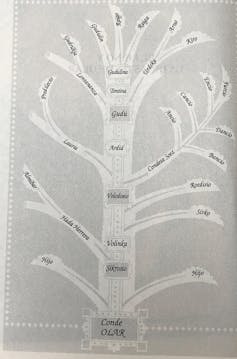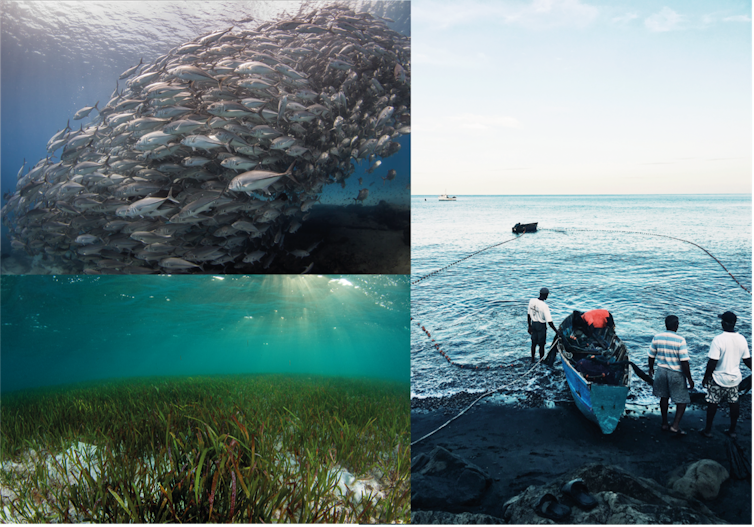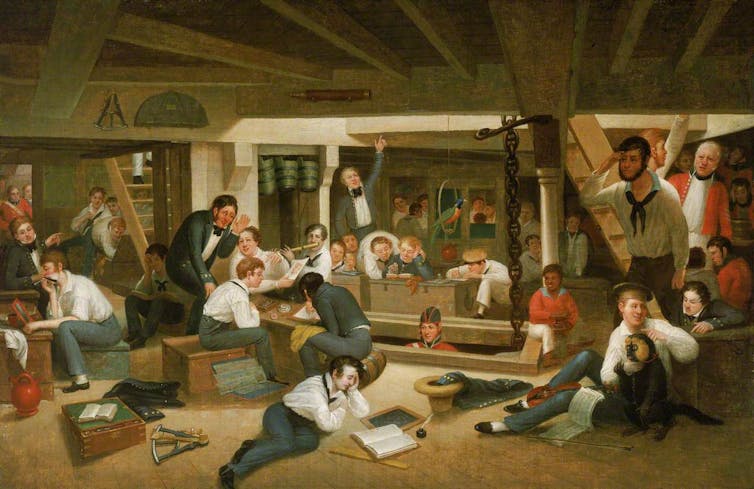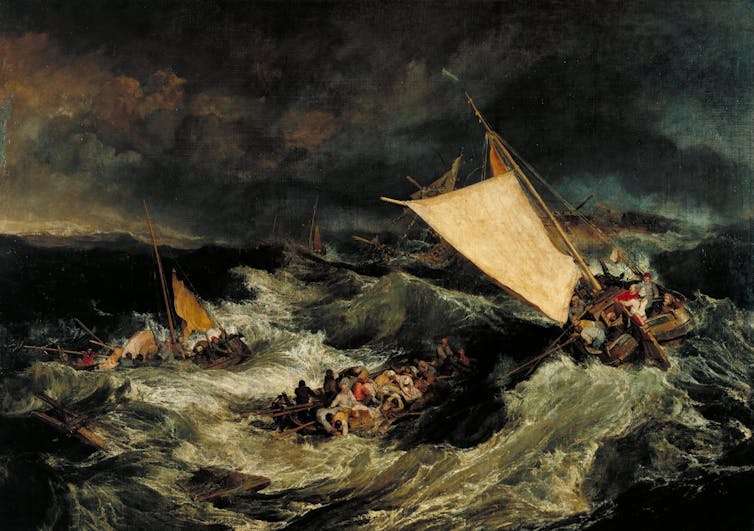Source: The Conversation – Canada – By Jason Wang, Postdoctoral Fellow, Modern Literature and Culture Research Centre, Toronto Metropolitan University
The scene at Gillette Stadium in Massachusetts on July 16 was steeped in irony.
During Coldplay’s “jumbotron song” — the concert segment where cameras pan over the crowd — the big screen landed on Andy Byron, then-CEO of data firm Astronomer, intimately embracing Kristin Cabot, the company’s chief people officer. Both are married to other people.
The moment, captured on video and widely circulated on social media, shows the pair abruptly recoiling as Coldplay’s lead singer Chris Martin says: “Either they’re having an affair or they’re just very shy.”
Martin’s comment — seemingly light-hearted at the time — quickly took on a different tone as online sleuths identified the pair and uncovered their corporate roles and marital statuses. Within days, Byron resigned from his position as CEO while Cabot is on leave.
This spectacle raises a deeper question: why does infidelity, especially among the powerful, provoke such public outcry. Literary tradition offers some insight: intimate betrayal is never truly private. It shatters an implicit social contract, demanding communal scrutiny to restore trust.
When trust crumbles publicly
French philosopher Paul Ricoeur’s notion of “narrative identity” suggests we make sense of our lives as unfolding stories. The promises we make (and break) become chapters of identity and the basis of others’ trust. Betrayal ruptures the framework that stitches private vows to public roles; without that stitch, trust frays.
Byron’s stadium exposure turned a marital vow into a proxy for professional integrity. Public betrayal magnifies public outcry because leaders symbolize stability; their personal failings inevitably reflect on their institutions.
When Astronomer’s board stated the expected standard “was not met,” they were lamenting the collapse of Byron’s narrative integrity — and, by extension, their company’s.
This idea — that private morality underpins public order — is hardly new. In Laws, ancient Greek philosopher Plato described adultery as a disorder undermining family and state. Roman philosopher Seneca called it a betrayal of nature, while statesman Cicero warned that breaking fides (trust) corrodes civic bonds.
The social cost of infidelity in literature
Literature rarely confines infidelity to the bedroom; its shockwaves fracture communities.
French sociologist Émile Durkheim’s idea of the “conscience collective” holds that shared moral norms create “social solidarity.” As literature demonstrates, violations of these norms inevitably undermines communal trust.

(Penguin Random House)
Leo Tolstoy’s Anna Karenina (1875-77) dramatizes the social fracture of betrayal. Anna’s affair with Count Vronsky not only defies moral convention but destabilizes the aristocratic norms that once upheld her status.
As the scandal leads to her ostracization, Anna mourns the social world she has lost, realizing too late that “the position she enjoyed in society… was precious to her… [and] she could not be stronger than she was.”
In Gustave Flaubert’s Madame Bovary (1857), Emma Bovary’s extramarital affairs unravel the networks of her provincial town, turning private yearning for luxury and romance into public contagion.
Nathaniel Hawthorne’s The Scarlet Letter (1850) makes this explicit: Hester Prynne’s scarlet “A” turns her sin into civic theatre. Public shaming on the scaffold, the novel suggests, delineates moral boundaries and seeks to restore social order — a process that prefigures today’s “digital pillories,” where viral moments subject individuals to mass online judgment and public condemnation.
Domestic crumbs and digital scaffolds
Contemporary narratives shift the setting but uphold the same principle: betrayal devastates the mundane rituals that build trust.

(Penguin Random House)
Nora Ephron’s autobiographical novel Heartburn (1983), based on her own marriage’s collapse to investigative journalist Carl Bernstein, weaponizes domesticity.
Heartburn’s protagonist Rachel Samstat delivers her emotions through recipes — “Vinaigrette” as a marker of intimacy and betrayal, “Lillian Hellman’s Pot Roast” as a bid for domestic stability and “Key Lime Pie,” hurled at her cheating husband — become symbols of a life undone by public infidelity.
Ephron’s satire, later adapted into a film, anticipates our digital age of exposure, where private pain fuels public consumption and judgment.
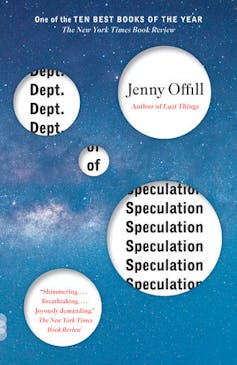
(Penguin Random House)
Jenny Offill’s Dept. of Speculation (2014), which draws from her own life, shows another perspective: betrayal as quiet erosion.
Offill never depicts the affair directly; instead, the husband’s absences, silences and an off-hand reference to “someone else” create a suffocating dread. This indirection shows betrayal’s power lies in its latent potential, slowly dismantling a life built on trust before any overt act.
Both works underscore betrayal’s impact on the collective conscience: a lie fractures a family as fundamentally as a CEO’s indiscretion erodes institutional trust. Power magnifies the fallout by turning private failings into public symbols of fragility. Even hidden betrayal poisons the shared rituals binding any group, making the notion of “private” unsustainable long before any public revelation.
The limits of power
Literature acknowledges power’s protective veneer from consequence — and its limits.
Theodore Dreiser’s Trilogy of Desire (1912–47), modelled on the Gilded Age robber baron Charles Yerkes, follows the rise of financier Frank Cowperwood, whose power shields him — until it doesn’t. Even his vast empire proves vulnerable once his adultery becomes public. The very networks that protected him grow wary.
Though many critics of the elite are themselves morally compromised in the trilogy, Cowperwood’s transgression becomes a weapon to discredit him. His brief exile shows that power may defer, but cannot erase, the costs of betrayal. Once trust fractures, even the powerful become liabilities. They do not fall less often — only more conspicuously.
Gender also plays a role in shaping these narratives. Male protagonists like Cowperwood rebound as tragic anti-heroes, their moral failings recast as flaws of character. By contrast, women — think Flaubert’s Emma Bovary or Hawthorne’s Hester Prynne — are branded cautionary figures, their transgressions stigmatized rather than mythologized.
This imbalance in assigning consequences reveals a deeper societal judgment: while broken trust demands repair, the path to restoration often depends on the transgressor’s gender.
The unblinking eye
From Tolstoy’s salons to TikTok’s scroll, literature offers no refuge from betrayal’s ripple effects. When private trust visibly fractures, communal reflexes kick in.
Scarlet letters, exile or a CEO’s resignation all aim to heal the collective trust. The jumbotron, like Hester’s scaffold, is the latest instrument in this age-old theatre of exposure.
Jumbotrons. Scaffolds. Same operating system. Same shame.
![]()
Jason Wang does not work for, consult, own shares in or receive funding from any company or organisation that would benefit from this article, and has disclosed no relevant affiliations beyond their academic appointment.
– ref. Caught on the jumbotron: How literature helps us understand modern-day public shaming – https://theconversation.com/caught-on-the-jumbotron-how-literature-helps-us-understand-modern-day-public-shaming-261638



